Dicloplast Patch 3's
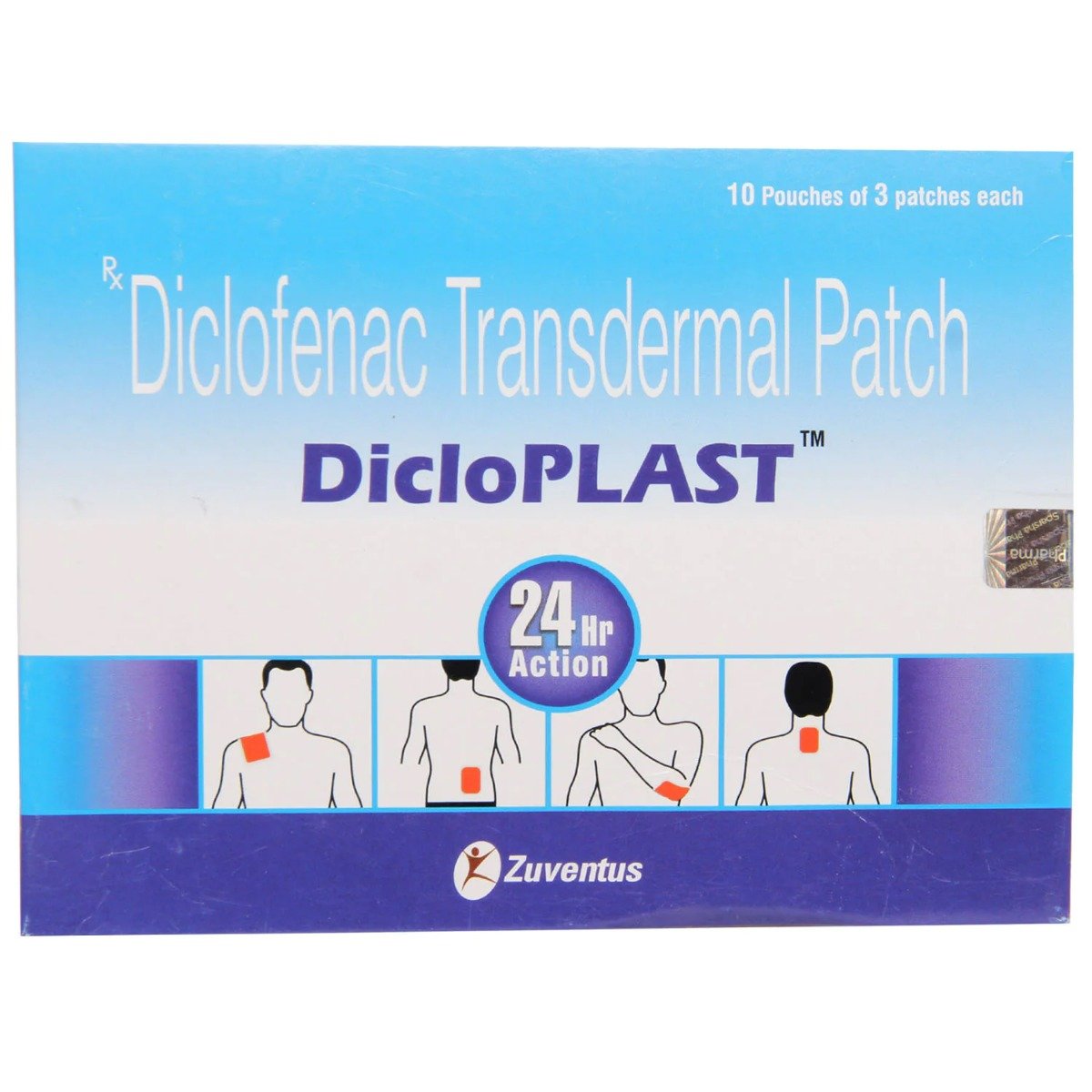
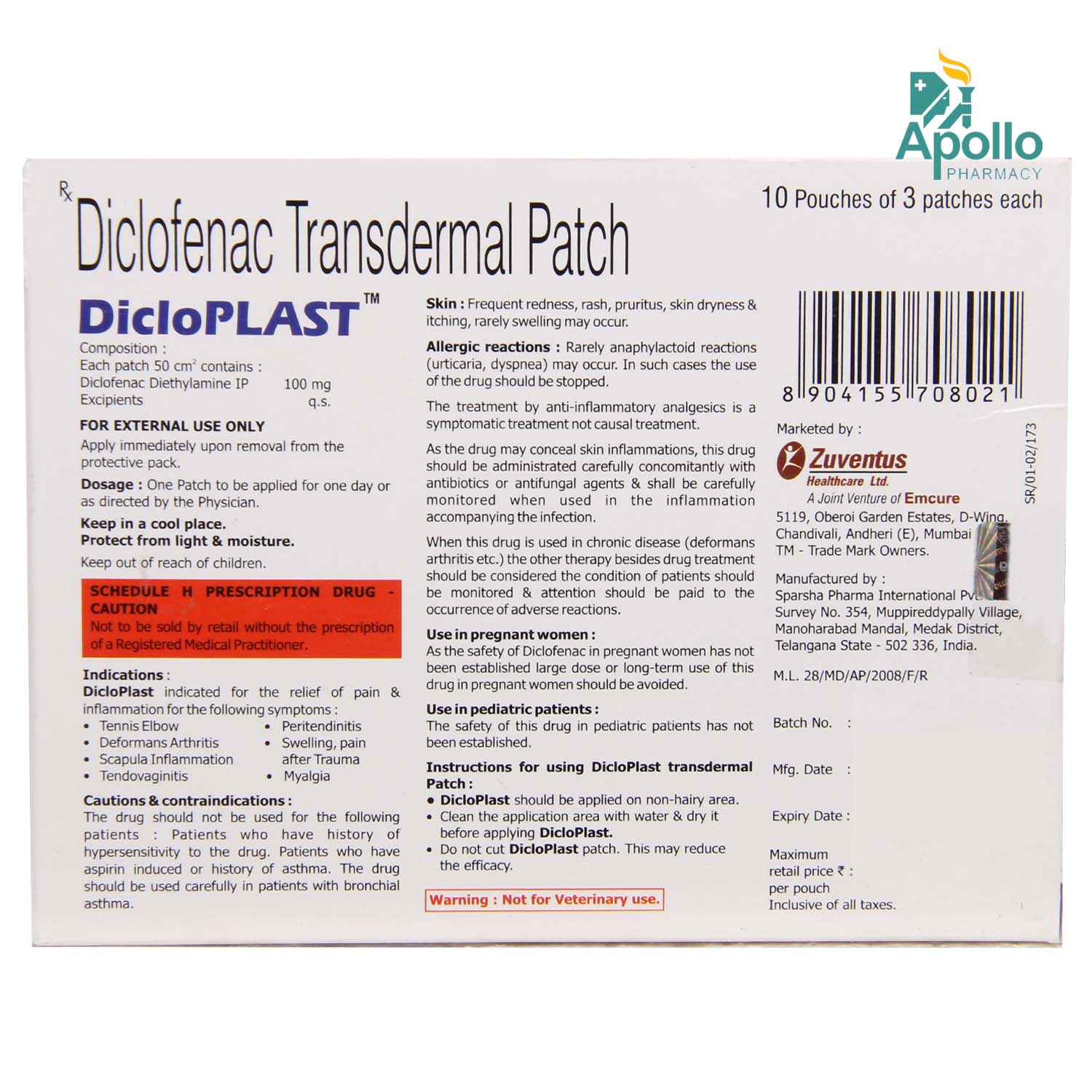
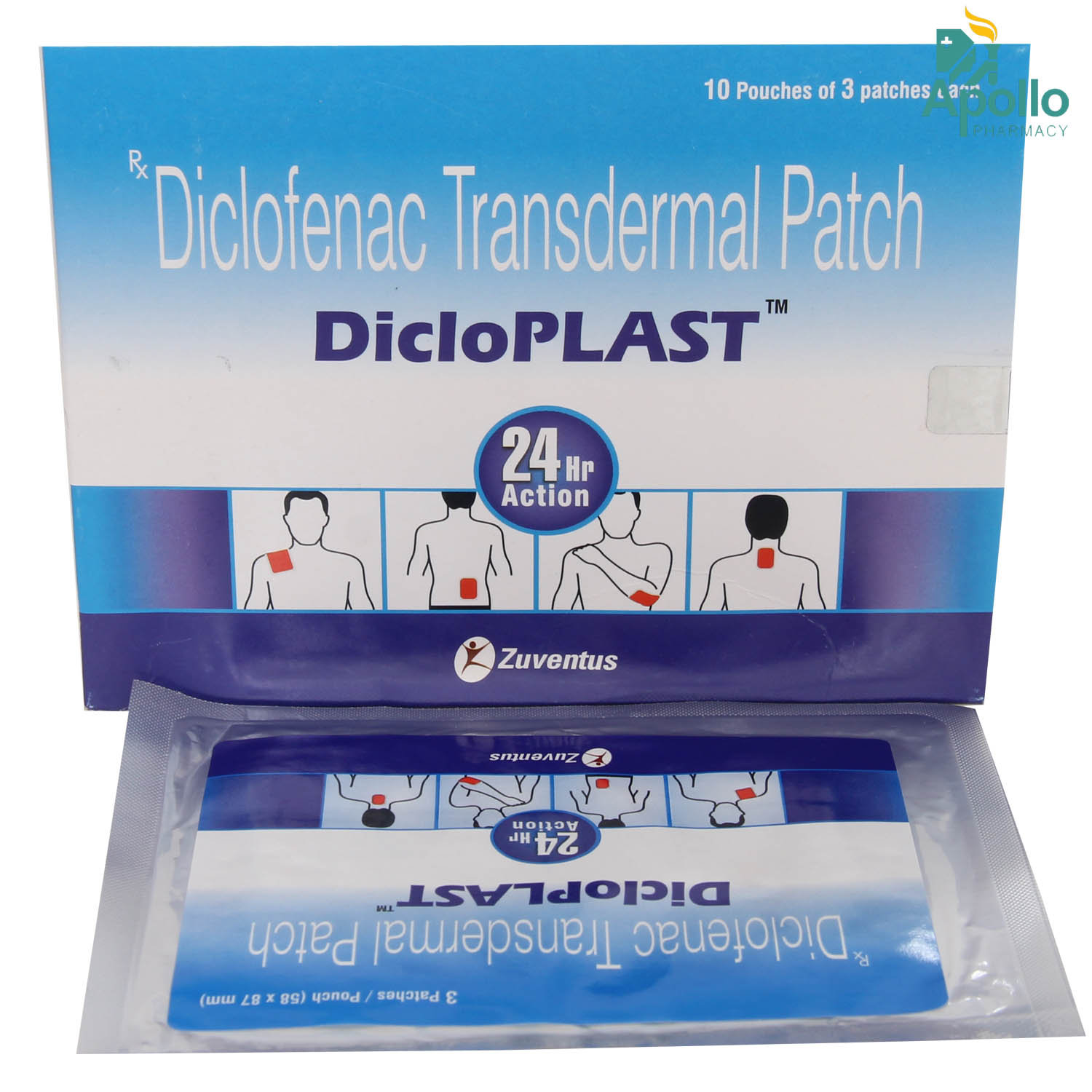



₹158.8
MRP ₹180.512% off
(Inclusive of all Taxes)
Get Free delivery (₹99)
About Dicloplast Patch
Dicloplast Patch is used to relieve pain and inflammation associated with musculoskeletal disorders, strain, sprain, arthritis, contusions (bruise), post-traumatic pain, and low back pain. Musculoskeletal pain could occur due to arthritis, osteoporosis, fractures, dislocations, problems with the bone structure or injury to the bones, joints, tendons, muscles, and ligaments.
Dicloplast Patch contains Diclofenac diethylamine which works by blocking the effect of a chemical messenger known as cyclo-oxygenase (COX) enzymes that make another chemical prostaglandin. By blocking the effect of COX enzymes, lesser prostaglandins are produced; this helps in reducing mild to moderate pain and inflammation at the injured or damaged site.
In some cases, you may experience common side-effects such as application site reactions like itching, irritation, redness, and burning sensation. Most of these side effects do not require medical attention and will resolve gradually over time. However, you are advised to talk to your doctor if the side effects persist or worsen
Dicloplast Patch is for external use only. Notify your doctor if you have had any recent heart surgery. Consult a doctor before using Dicloplast Patch if you are pregnant or breastfeeding. Dicloplast Patch is not recommended for children below 14 years. Avoid using Dicloplast Patch if you are during the perioperative period in the setting of coronary artery bypass graft surgery.
Country of origin
Manufacturer/Marketer address
Online payment accepted

secured payment

india's most trusted pharmacy

genuine products
Composition :
Manufacturer/Marketer :
Consume Type :
Return Policy :
Expires on or after :
Available Offers
Provide Delivery Location
About Dicloplast Patch
Dicloplast Patch is used to relieve pain and inflammation associated with musculoskeletal disorders, strain, sprain, arthritis, contusions (bruise), post-traumatic pain, and low back pain. Musculoskeletal pain could occur due to arthritis, osteoporosis, fractures, dislocations, problems with the bone structure or injury to the bones, joints, tendons, muscles, and ligaments.
Dicloplast Patch contains Diclofenac diethylamine which works by blocking the effect of a chemical messenger known as cyclo-oxygenase (COX) enzymes that make another chemical prostaglandin. By blocking the effect of COX enzymes, lesser prostaglandins are produced; this helps in reducing mild to moderate pain and inflammation at the injured or damaged site.
In some cases, you may experience common side-effects such as application site reactions like itching, irritation, redness, and burning sensation. Most of these side effects do not require medical attention and will resolve gradually over time. However, you are advised to talk to your doctor if the side effects persist or worsen
Dicloplast Patch is for external use only. Notify your doctor if you have had any recent heart surgery. Consult a doctor before using Dicloplast Patch if you are pregnant or breastfeeding. Dicloplast Patch is not recommended for children below 14 years. Avoid using Dicloplast Patch if you are during the perioperative period in the setting of coronary artery bypass graft surgery.
Uses of Dicloplast Patch
Key Benefits
Dicloplast Patch is used to relieve pain and inflammation associated with musculoskeletal disorders, strain, sprain, arthritis, and low back pain. Dicloplast Patch works by blocking the effect of a chemical messenger known as cyclo-oxygenase (COX) enzymes that make other chemical prostaglandins. By blocking the effect of COX enzymes, lesser prostaglandins are produced, which reduces mild to moderate pain and inflammation at the injured or damaged site.
Directions for Use
Storage
Side Effects of Dicloplast Patch
- Itching
- Irritation
- Redness
- Eczema
Key Ingredients
Drug Warnings
Do not use Dicloplast Patch if you are allergic to any of its contents, if you are hypersensitive to NSAIDs, or if you have kidney failure. Avoid using Dicloplast Patch if you are during the perioperative period in the setting of coronary artery bypass graft surgery. Dicloplast Patch may increase the risk of a fatal heart attack or stroke. So, if you have had any recent heart surgery, do not use Dicloplast Patch. Inform your doctor if you have peptic ulcers, heart surgery, high blood pressure, high cholesterol, diabetes, stomach ulcers, bleeding problems, asthma, fluid retention, inflammatory bowel disease, kidney or liver problems. Consult a doctor if you are pregnant or breastfeeding. Dicloplast Patch is not recommended for children below 14 years.
Drug Interactions
Drug-Drug Interactions: No interactions found/established.
Drug-Food Interactions: No interactions found/established.
Drug-Disease Interactions: No interactions found/established.
Habit Forming
Diet & Lifestyle Advise
- Physical activity helps in strengthening muscles and relieves joint stiffness. Gentle activities like 20-30minutes of walking or swimming would be helpful.
- Performing yoga may also help in improving joint flexibility and pain management.
- Maintain a healthy weight by performing regular low-strain exercises and eating healthy food.
- Get adequate sleep as resting the muscles can help in reducing inflammation and swelling.
- De-stress yourself by meditating, reading books, taking a warm bubble bath or listening to soothing music.
- Acupuncture, massage and physical therapy may also be helpful.
- Eat food rich in antioxidants such as berries, spinach, kidney beans, dark chocolate, etc.
- Foods containing flavonoids help in reducing inflammation. These include soy, berries, broccoli, grapes and green tea.
- Avoid smoking and alcohol consumption.
Special Advise
- Do not apply Dicloplast Patch on cuts, wounds, broken skin, infections, or rashes.
- Wash your hands after use. However, do not wash your hands if you are using Dicloplast Patch on the hands.
- If Dicloplast Patch comes in contact with eyes, mouth or nose, wash with water immediately. Consult a doctor if irritation persists.
Disease/Condition Glossary
Musculoskeletal pain: Musculoskeletal pain affects the bones, muscles, ligaments, tendons, and nerves. It can be acute or chronic, can be localised or widespread. The pain can be mild or severe enough to interfere with your daily routine. Musculoskeletal pain could occur due to arthritis, osteoporosis, fractures, dislocations, problems with the bone structure or injury to the bones, joints, tendons, muscles, and ligaments. Symptoms of musculoskeletal pain include stiffness, swelling, redness, weakness, muscle spasms or twitching, trouble moving the affected area, and soreness.
Osteoarthritis: It is a joint disease in which the two ends of the joints come together due to the breakdown of a protective covering called cartilage. Due to the absence of this protective covering, the joints rub against each other, leading to pain and stiffness. Symptoms include pain, stiffness, inflammation and tenderness.
FAQs
Dicloplast Patch works by blocking the effect of chemical messengers that cause pain and inflammation at the injured or damaged site. Thereby, Dicloplast Patch helps in providing relief from pain.
Dicloplast Patch is used to reduce and relieve pain and inflammation associated with osteoarthritis. It is a joint disease in which the two ends of the joints come together due to the breakdown of a protective covering called cartilage.
Avoid concomitant use of Dicloplast Patch with other topical products such as cosmetics, sunscreens, lotions, moisturisers, insect repellent creams, and other gels.
Do not apply external heat or cover the treated skin with dressings after applying Dicloplast Patch. Covering the skin or applying heat might increase the amount of drugs absorbed into the skin leading to unpleasant side effects.
Do not apply Dicloplast Patch on wounds, skin injuries, irritated skin, skin abrasions, rashes, and infections. Apply Dicloplast Patch on healthy skin only.
Avoid using Dicloplast Patch for longer durations unless prescribed by the doctor. The duration depends upon the response to the treatment. If your condition does not improve despite using Dicloplast Patch for 7 days, consult a doctor.
Disclaimer
Alternatives
Product Substitutes
Similar Products
Alcohol
Caution
Avoid alcohol consumption as it might increase the risk of stomach bleeding.
Pregnancy
Caution
Please consult your doctor if you have any concerns regarding this; your doctor will prescribe only if the benefits outweigh the risks. Dicloplast Patch should not be used during the last trimester of pregnancy.
Breast Feeding
Caution
Consult your doctor if you are breastfeeding; your doctor will decide whether Dicloplast Patch can be used by breastfeeding mothers or not. If you are breastfeeding, avoid applying Dicloplast Patch on your breast.
Driving
Safe if prescribed
Dicloplast Patch does not affect your ability to drive.
Liver
Caution
Please consult your doctor if you have a liver impairment or any concerns regarding this.
Kidney
Caution
Please consult your doctor if you have kidney impairment or any concerns regarding this. Avoid using Dicloplast Patch if you have kidney failure.
Children
Unsafe
Dicloplast Patch is not recommended for children below 14 years as safety and effectiveness have not been established.
Author Details
We provide you with authentic, trustworthy and relevant information
Uses of Dicloplast Patch
Key Benefits
Dicloplast Patch is used to relieve pain and inflammation associated with musculoskeletal disorders, strain, sprain, arthritis, and low back pain. Dicloplast Patch works by blocking the effect of a chemical messenger known as cyclo-oxygenase (COX) enzymes that make other chemical prostaglandins. By blocking the effect of COX enzymes, lesser prostaglandins are produced, which reduces mild to moderate pain and inflammation at the injured or damaged site.
- Hydrate your body: Drink enough water to prevent dehydration and headaches.
- Calm Your Mind: Deep breathing and meditation can help you relax and relieve stress.
- Rest and Recharge: Sleep for 7-8 hours to reduce headache triggers.
- Take rest: lie down in a quiet, dark environment.
- Cold or warm compresses can help reduce tension.
- Stay Upright: Maintain good posture to keep symptoms from getting worse.
- To treat headaches naturally, try acupuncture or massage therapy.
- Over-the-counter pain relievers include acetaminophen and ibuprofen.
- Prescription Assistance: Speak with your doctor about more substantial drug alternatives.
- Severe Headaches: Seek emergency medical assistance for sudden, severe headaches.
- Frequent Headaches: If you get reoccurring headaches, consult your doctor.
- Headaches with Symptoms: Seek medical attention if your headaches include fever, disorientation, or weakness.
Directions for Use
Storage
Drug Warnings
Do not use Dicloplast Patch if you are allergic to any of its contents, if you are hypersensitive to NSAIDs, or if you have kidney failure. Avoid using Dicloplast Patch if you are during the perioperative period in the setting of coronary artery bypass graft surgery. Dicloplast Patch may increase the risk of a fatal heart attack or stroke. So, if you have had any recent heart surgery, do not use Dicloplast Patch. Inform your doctor if you have peptic ulcers, heart surgery, high blood pressure, high cholesterol, diabetes, stomach ulcers, bleeding problems, asthma, fluid retention, inflammatory bowel disease, kidney or liver problems. Consult a doctor if you are pregnant or breastfeeding. Dicloplast Patch is not recommended for children below 14 years.
Therapeutic Class
Drug-Drug Interactions
Drug-Drug Interactions
Login/Sign Up
Co-administration of Dicloplast Patch with Meloxicam can increase the risk or severity of gastrointestinal side effects.
How to manage the interaction:
Taking Meloxicam with Dicloplast Patch is not recommended as it can possibly result in an interaction, it can be taken if your doctor has advised it. However, consult your doctor immediately if you experience symptoms such as dizziness, lightheadedness, red or black, tarry stools, coughing up or vomiting fresh or dried blood that looks like coffee grounds, severe headache, and weakness. Do not stop any medication without doctor's advise.
Taking Dicloplast Patch with Enoxaparin can increase the risk of bleeding complications.
How to manage the interaction:
There may be a possible interaction between Dicloplast Patch and Enoxaparin, but they can be taken together if your doctor has prescribed them. However, consult your doctor immediately if you experience any unusual bleeding or bruising, swelling, vomiting, blood in your urine or stools, headache, dizziness, or weakness. Do not discontinue any medications without consulting a doctor.
Coadministration of Dicloplast Patch with Ketoconazole may increase the risk of liver problems.
How to manage the interaction:
There may be a possible interaction between Dicloplast Patch and Ketoconazole, but they can be taken together if a doctor has prescribed them. However, consult a doctor immediately if you have fever, chills, joint pain or swelling, unusual bleeding or bruising, skin rash, itching, loss of appetite, fatigue, nausea, vomiting, abdominal pain, dark colored urine, light colored stools, and/or yellowing of the skin or eyes. Do not discontinue any medications without consulting a doctor.
Taking Dicloplast Patch with human immunoglobulin may increase the risk of kidney problems.
How to manage the interaction:
Although there is an interaction between Human immunoglobulin and Dicloplast Patch, you can take these medicines together if prescribed by a doctor. However, consult the doctor immediately if you experience symptoms such as nausea, vomiting, loss of appetite, increased or decreased urination, sudden weight gain or weight loss, fluid retention, swelling, shortness of breath, muscle cramps, tiredness, weakness, dizziness, confusion, and irregular heart rhythm. Do not discontinue any medications without consulting a doctor.
Taking Dicloplast Patch with Ibrutinib can increase the risk of bleeding tendencies.
How to manage the interaction:
There may be a possible interaction between Dicloplast Patch and Ibrutinib, but they can be taken together if a doctor has prescribed them. However, consult a doctor immediately if you experience any unusual bleeding, dizziness, lightheadedness, red or black, tarry stools, coughing up or vomiting fresh or dried blood that looks like coffee grounds, or severe headaches. Do not discontinue any medications without consulting a doctor.
Co-administration of Dicloplast Patch with Celecoxib may increase the risk of stomach bleeding and ulcers.
How to manage the interaction:
Although there is a interaction between Dicloplast Patch and Celecoxib, but it can be taken if your doctor has advised it. Consult a doctor if you experience symptoms like blood in your urine or stool (or a black stool), severe bruising, prolonged nosebleeds, feeling dizzy or lightheaded, weakness or severe headache, vomiting blood or coughing up blood, heavy menstrual bleeding (in women), difficulty breathing, or chest pain. Do not discontinue any medication without consulting a doctor.
Co administration of Dicloplast Patch with Leflunomide may result in liver problems.
How to manage the interaction:
Co-administration of Dicloplast Patch and Leflunomide can lead to an interaction; it can be taken if advised by your doctor. However, if you have a fever, chills, joint pain or swelling, unusual bleeding or bruising, skin rash, itching, loss of appetite, fatigue, nausea, vomiting, abdominal pain, dark-colored urine, light-colored stools, or yellowing of the skin or eyes. Do not stop using any medication without consulting your doctor.
Concomitant administration of Dicloplast Patch and furosemide may decrease the therapeutic efficacy of furosemide and adversely affect renal function.
How to manage the interaction:
There may be a possible interaction between Dicloplast Patch and furosemide, but they can be taken together if your doctor has prescribed them. However, consult your doctor immediately if you experience symptoms like nausea, dizziness, irregular heartbeats, altered blood pressure, tingling. Do not stop using any medications without first talking to your doctor.
Co-administration of Dicloplast Patch and tenofovir alafenamide may cause kidney problems.
How to manage the interaction:
There may be a possible interaction between Dicloplast Patch and Tenofovir alafenamide but they can be taken together if your doctor has prescribed them. However, consult your doctor immediately if you experience symptoms such as such as nausea, vomiting, loss of appetite, increased or decreased urination, sudden weight gain or weight loss, fluid retention, swelling, shortness of breath, bone pain, muscle cramps, tiredness, weakness, dizziness, confusion, and irregular heart rhythm. Do not stop using any medications without talking to your doctor.
Taking Dasatinib together with Dicloplast Patch may increase the risk of bleeding.
How to manage the interaction:
There may be a possible interaction between Dicloplast Patch and Dasatinib but they can be taken together if a doctor has prescribed them. However, consult a doctor immediately if you experience dizziness, red or black, tarry stools, or severe headaches. Do not discontinue any medications without consulting a doctor.
Diet & Lifestyle Advise
- Physical activity helps in strengthening muscles and relieves joint stiffness. Gentle activities like 20-30minutes of walking or swimming would be helpful.
- Performing yoga may also help in improving joint flexibility and pain management.
- Maintain a healthy weight by performing regular low-strain exercises and eating healthy food.
- Get adequate sleep as resting the muscles can help in reducing inflammation and swelling.
- De-stress yourself by meditating, reading books, taking a warm bubble bath or listening to soothing music.
- Acupuncture, massage and physical therapy may also be helpful.
- Eat food rich in antioxidants such as berries, spinach, kidney beans, dark chocolate, etc.
- Foods containing flavonoids help in reducing inflammation. These include soy, berries, broccoli, grapes and green tea.
- Avoid smoking and alcohol consumption.
Habit Forming
Side Effects of Dicloplast Patch
- Itching
- Irritation
- Redness
- Eczema
Key Ingredients
Special Advise
- Do not apply Dicloplast Patch on cuts, wounds, broken skin, infections, or rashes.
- Wash your hands after use. However, do not wash your hands if you are using Dicloplast Patch on the hands.
- If Dicloplast Patch comes in contact with eyes, mouth or nose, wash with water immediately. Consult a doctor if irritation persists.
Disease/Condition Glossary
Musculoskeletal pain: Musculoskeletal pain affects the bones, muscles, ligaments, tendons, and nerves. It can be acute or chronic, can be localised or widespread. The pain can be mild or severe enough to interfere with your daily routine. Musculoskeletal pain could occur due to arthritis, osteoporosis, fractures, dislocations, problems with the bone structure or injury to the bones, joints, tendons, muscles, and ligaments. Symptoms of musculoskeletal pain include stiffness, swelling, redness, weakness, muscle spasms or twitching, trouble moving the affected area, and soreness.
Osteoarthritis: It is a joint disease in which the two ends of the joints come together due to the breakdown of a protective covering called cartilage. Due to the absence of this protective covering, the joints rub against each other, leading to pain and stiffness. Symptoms include pain, stiffness, inflammation and tenderness.
All Substitutes & Brand Comparisons
RX
Powergesic 100mg Transdermal Patch 3's
Jenburkt Pharmaceuticals Ltd
₹191.5
(₹57.47 per unit)
8% COSTLIERRX
Dicloplast Patches 10's
Zuventus Healthcare Ltd
₹17550
(₹1755.0 per unit)
3215% COSTLIER

Have a query?
Buy best C.n.s Drugs products by
Intas Pharmaceuticals Ltd
Sun Pharmaceutical Industries Ltd
Torrent Pharmaceuticals Ltd
Alkem Laboratories Ltd
Abbott India Ltd
Cipla Ltd
Alteus Biogenics Pvt Ltd
Micro Labs Ltd
Lupin Ltd
Ipca Laboratories Ltd
D D Pharmaceuticals Pvt Ltd
Icon Life Sciences
Mankind Pharma Pvt Ltd
Tripada Healthcare Pvt Ltd
Arinna Lifesciences Ltd
Linux Laboratories Pvt Ltd
East West Pharma India Pvt Ltd
La Renon Healthcare Pvt Ltd
Talent India Pvt Ltd
Tas Med India Pvt Ltd
Zydus Healthcare Ltd
Cnx Health Care Pvt Ltd
Eris Life Sciences Ltd
Leeford Healthcare Ltd
Emcure Pharmaceuticals Ltd
Macleods Pharmaceuticals Ltd
Sigmund Promedica
Aristo Pharmaceuticals Pvt Ltd
Dr Reddy's Laboratories Ltd
Troikaa Pharmaceuticals Ltd
Consern Pharma Ltd
Zydus Cadila
Shine Pharmaceuticals Ltd
Wockhardt Ltd
Ardent Life Sciences Pvt Ltd
Crescent Formulations Pvt Ltd
Theo Pharma Pvt Ltd
Reliance Formulation Pvt Ltd
Ikon Pharmaceuticals Pvt Ltd
Propel Healthcare
Neon Laboratories Ltd
Jagsam Pharma
Msn Laboratories Pvt Ltd
Morepen Laboratories Ltd
Pulse Pharmaceuticals
Sanofi India Ltd
Med Manor Organics Pvt Ltd
Hetero Healthcare Pvt Ltd
Novartis India Ltd
Crescent Therapeutics Ltd
Elder Pharmaceuticals Ltd
Solvate Laboratories Pvt Ltd
Akumentis Healthcare Ltd
Mova Pharmaceutical Pvt Ltd
Psyco Remedies Ltd
Tripada Lifecare Pvt Ltd
Ajanta Pharma Ltd
Cyrus Remedies Pvt Ltd
Medishri Healthcare Pvt Ltd
Cadila Healthcare Ltd
Glenmark Pharmaceuticals Ltd
Matteo Health Care Pvt Ltd
Hbc Life Sciences Pvt Ltd
Lyf Healthcare
Matias Healthcare Pvt Ltd
Mesmer Pharmaceuticals
Alembic Pharmaceuticals Ltd
Capital Pharma
Crescent Pharmaceuticals
Medopharm Pvt Ltd
Alniche Life Sciences Pvt Ltd
Kivi Labs Ltd
Talin Remedies Pvt Ltd
USV Pvt Ltd
Quince Lifesciences Pvt Ltd
Solis Pharmaceuticals
Infivis Life Care
Zuventus Healthcare Ltd
Cadila Pharmaceuticals Ltd
Pfizer Ltd
Wallace Pharmaceuticals Pvt Ltd
A N Pharmacia Laboratories Pvt Ltd
Blue Cross Laboratories Pvt Ltd
Jenburkt Pharmaceuticals Ltd
Lia Life Sciences Pvt Ltd
Mano Pharma
Medley Pharmaceuticals Ltd
Primus Remedies Pvt Ltd
FDC Ltd
Maneesh Pharmaceuticals Ltd
Apex Laboratories Pvt Ltd
Gagnant Healthcare Pvt Ltd
Ozone Pharmaceuticals Ltd
RPG Life Sciences Ltd
Strides Shasun Ltd
Unichem International
GlaxoSmithKline Pharmaceuticals Ltd
Kuresys Labs Pvt Ltd
LA Pharma
Trion Pharma India Llp







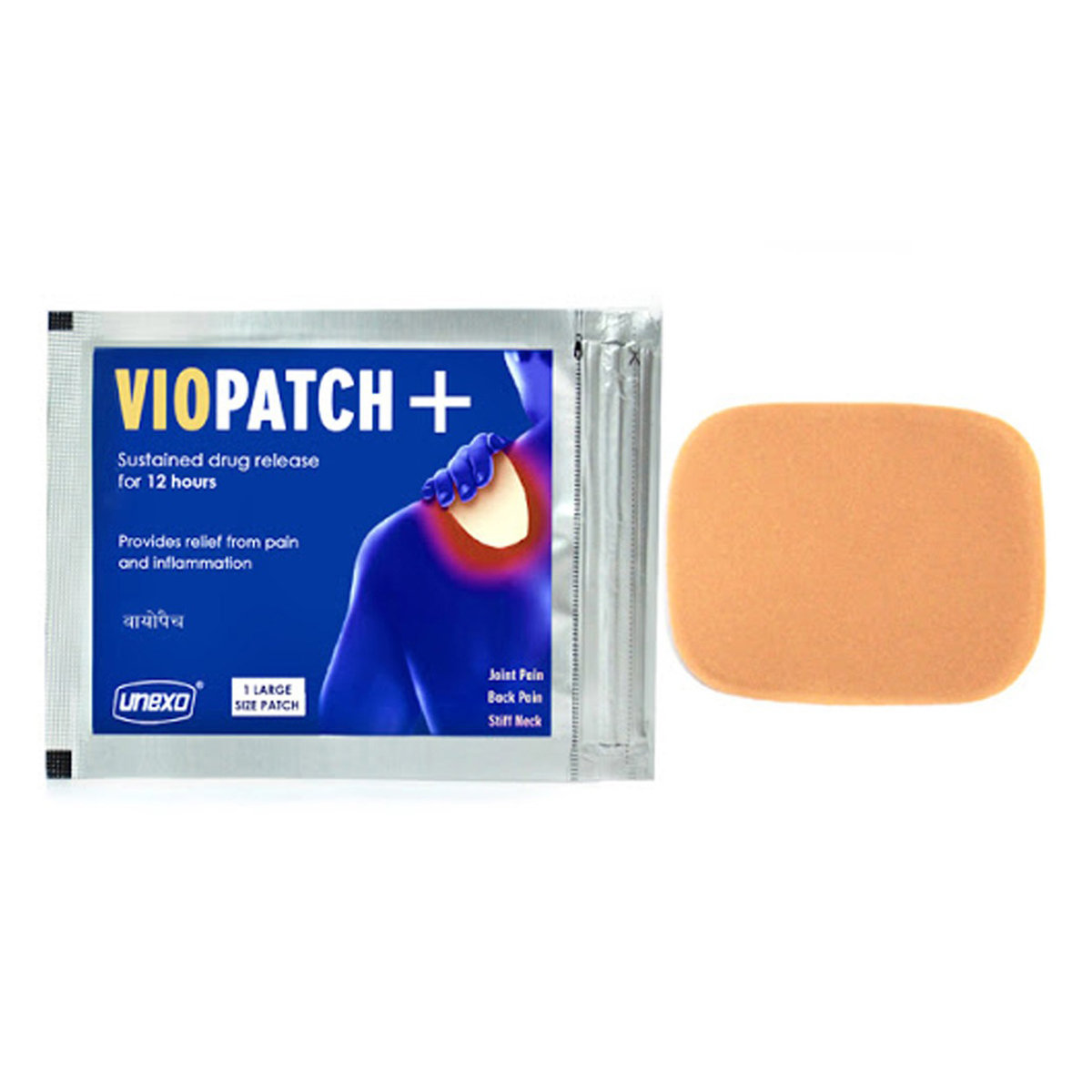
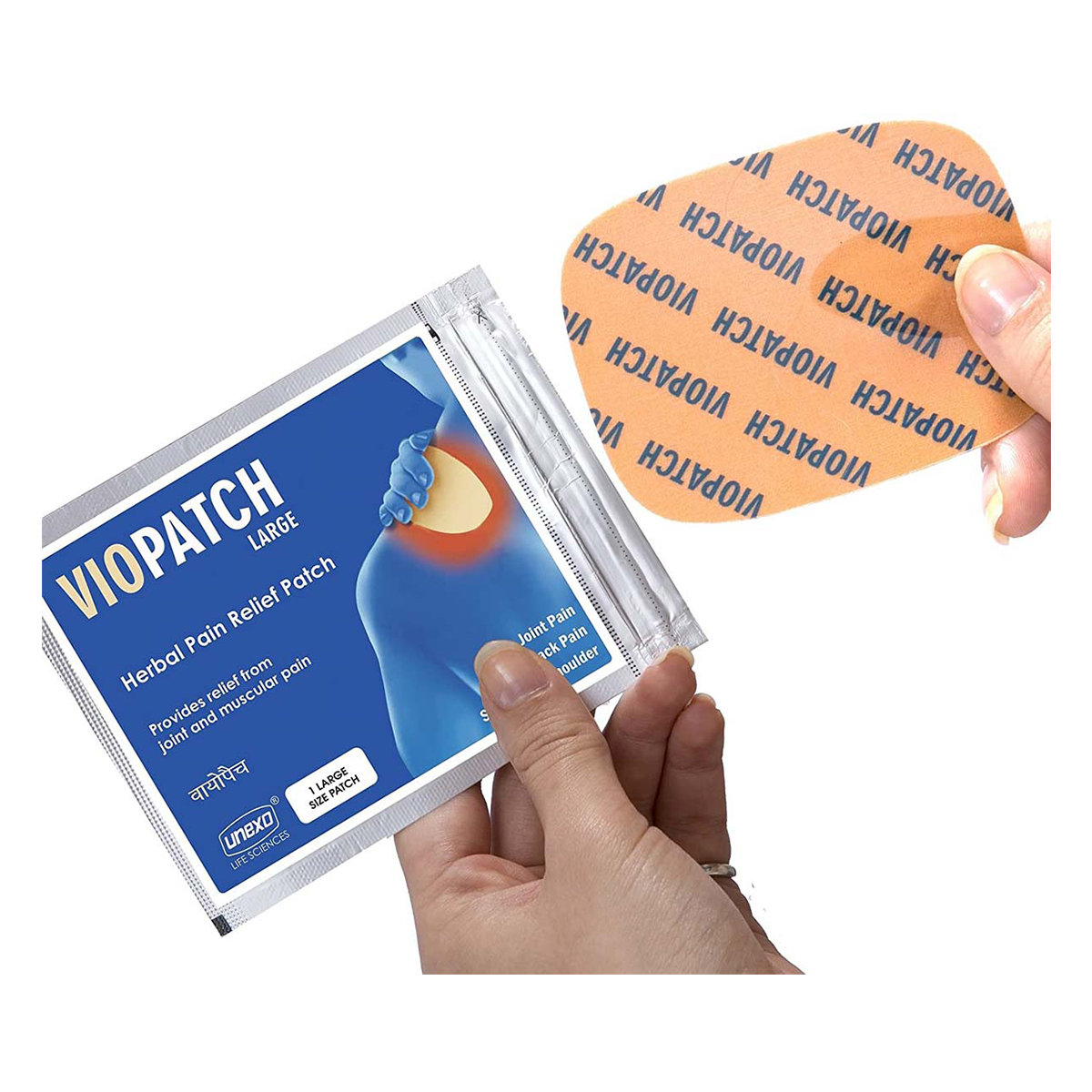
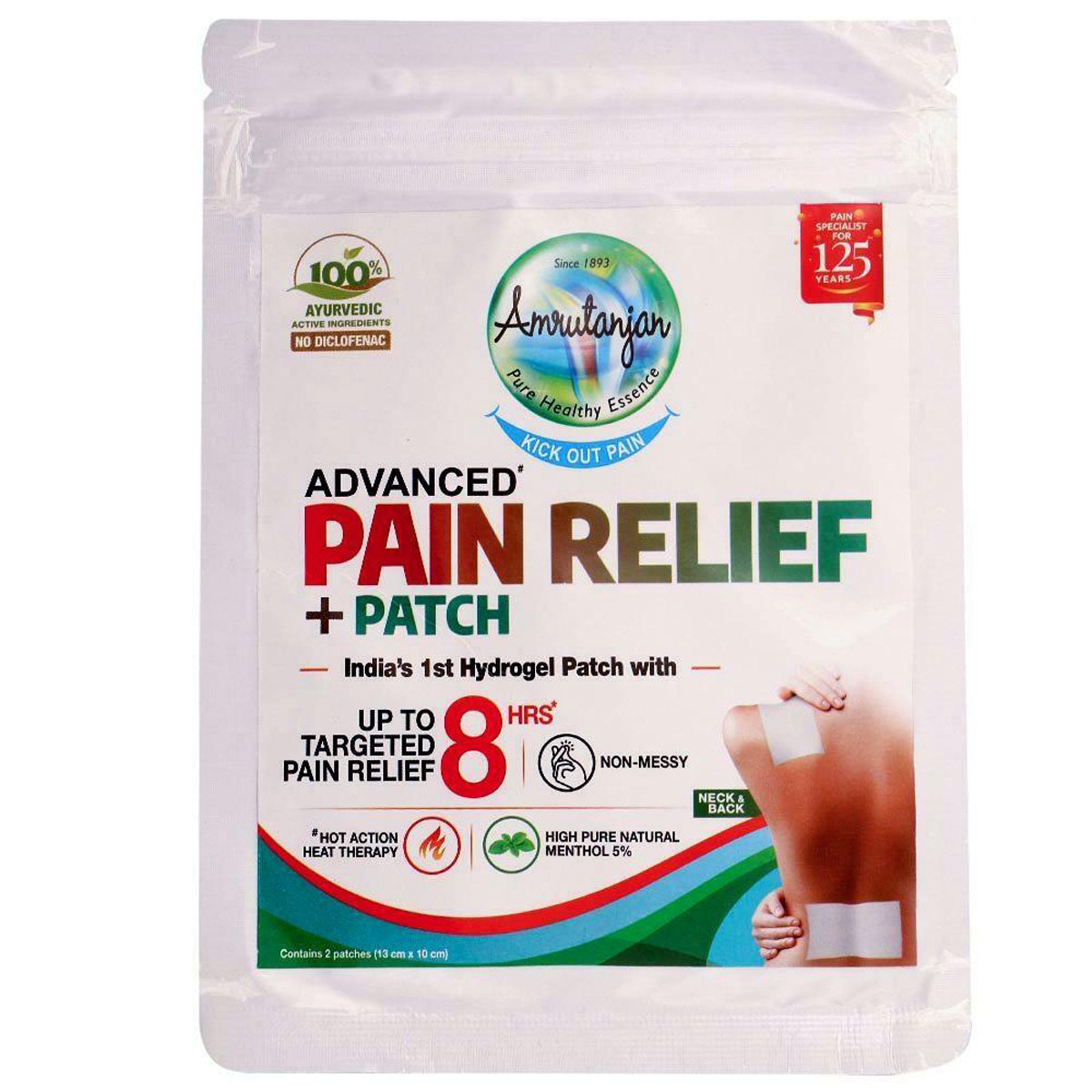
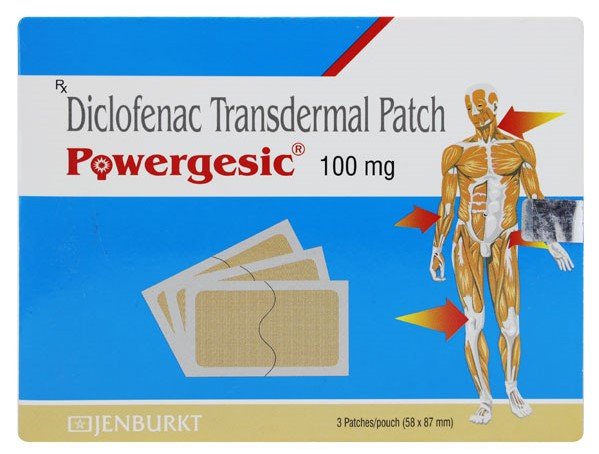

_0.jpg?tr=q-85)



